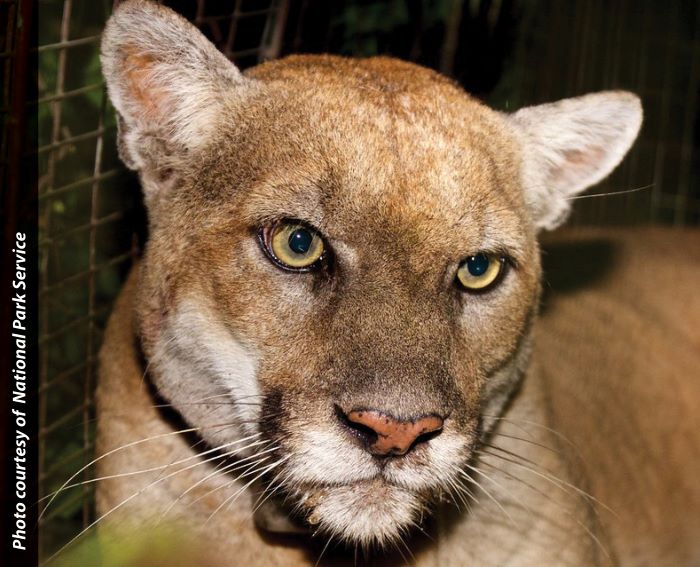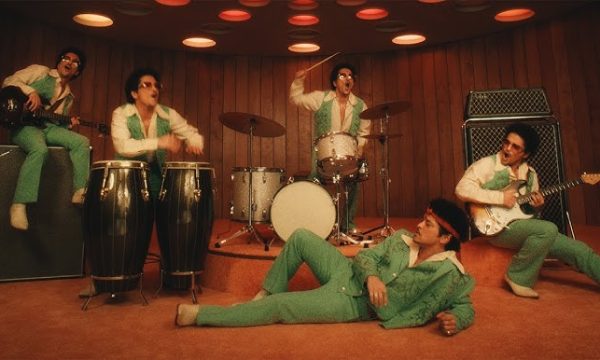The Southern California community bids farewell to beloved mountain lion P-22.
According to the news release, after receiving a comprehensive medical evaluation, California Dept. of Fish and Wildlife (CDFW) received a clear picture of the mountain lion P-22’s medical condition and overall health.
He had several severe injuries and chronic health problems. Based on these factors, compassionate euthanasia under general anesthesia was unanimously recommended by the medical team at San Diego Zoo Safari Park, and CDFW officials made the decision to do so on Saturday, Dec. 17.
P-22 was as famous as any Hollywood star here in SoCal.
P-22 received a thorough diagnostic evaluation by the Safari Park’s wildlife health team, under general anesthesia. The extensive evaluation included a physical exam, organ function tests, infectious disease screening, ultrasonography and computed tomography (CT) scans of the skull, chest and abdomen.
The results of these tests and screenings showed significant trauma to the mountain lion’s head, right eye and internal organs, confirming the suspicion of recent injury, such as a vehicle strike. The trauma to his internal organs would require invasive surgical repair.
The examination also revealed significant pre-existing illnesses, including irreversible kidney disease, chronic weight loss, extensive parasitic skin infection over his entire body and localized arthritis, all of which have led to the unfortunate deterioration in P-22’s overall condition.
P-22’s advanced age, combined with chronic, debilitating, life-shortening conditions and the clear need for extensive long-term veterinary intervention left P-22 with no hope for a positive outcome. His poor condition indicated that he may also have had additional underlying conditions not yet fully characterized by diagnostics.
The Safari Park wildlife care team consists of six veterinarians with additional board certification in zoologic medicine. Additionally, four veterinary specialists (board certifications in ophthalmology, radiology and surgery) were consulted.
CDFW is not seeking information on a vehicle collision. This situation is not the fault of P-22, nor of a driver who may have hit him. Rather, it is an eventuality that arises from habitat loss and fragmentation, and it underscores the need for thoughtful construction of wildlife crossings and well-planned spaces that provide wild animals room to roam.
On Thursday, Dec. 8, CDFW announced their intent to capture the world-famous mountain lion and bring him in for a health evaluation. On Monday Dec. 12, P-22 was captured by CDFW and National Park Service and brought in for evaluation. On Dec. 13, CDFW issued a FAQ document about P-22 and held a media briefing to provide an update on his condition.
CDFW wishes to thank our many partners. This has been a difficult journey for all of us. None more so than the dedicated staff who have been caring for him over this week, the biologists who have studied his incredible life, and the many compassionate individuals who have been his neighbors and followed his travails.
The Santa Monica Mountains national park service Instagram said:
“Mountain lion P-22 was more than just a celebrity cat. He was also a critical part of a long-term research study and a valuable ambassador for the cause of connectivity and for wildlife in the Santa Monica Mountains and beyond.
He was one of the oldest mountain lions in a study the National Park Service has been conducting since 2002 and one of its most interesting. When he was captured and collared in March 2012 by NPS biologists, he was estimated to be about 2 years old.
Likely born in the Santa Monica Mountains as the son of adult male P-1, he somehow found his way to his tiny, 9-square-mile home in Griffith Park, separated from the Santa Monicas by the 101 and 405, two of the busiest freeways in the world. Defying expectations, he persisted for more than 10 years in the smallest home range that has ever been recorded for an adult male mountain lion.
Although he made frequent appearances on the streets of the Hollywood Hills and even, more recently, the Silver Lake neighborhood, he was also clearly a wild cat, doing so mostly late at night, and subsisting largely on natural prey such as deer and coyotes.
In the end, he found his way into many Angelenos’ hearts and home surveillance camera footage.
Park biologists aim to understand and conserve the species that live in and around the park for generations to come. Although P-22 is now physically gone, scientists will be analyzing his data for years to come.
This animal’s life and safe passage to Griffith Park are a testament to both the challenges and the possibilities for wildlife in L.A. He showed us what mountain lions must do to survive in our urban landscape, as he dispersed through it to find a remaining island of habitat.
He also showed us what they are capable of: surviving and co-existing with millions of people in a city as dense and sprawling as L.A.
Goodbye, P-22. Your scientific legacy will live on.”
Mountain lion P-22 has had an extraordinary life and captured the hearts of the people of Los Angeles and beyond.














